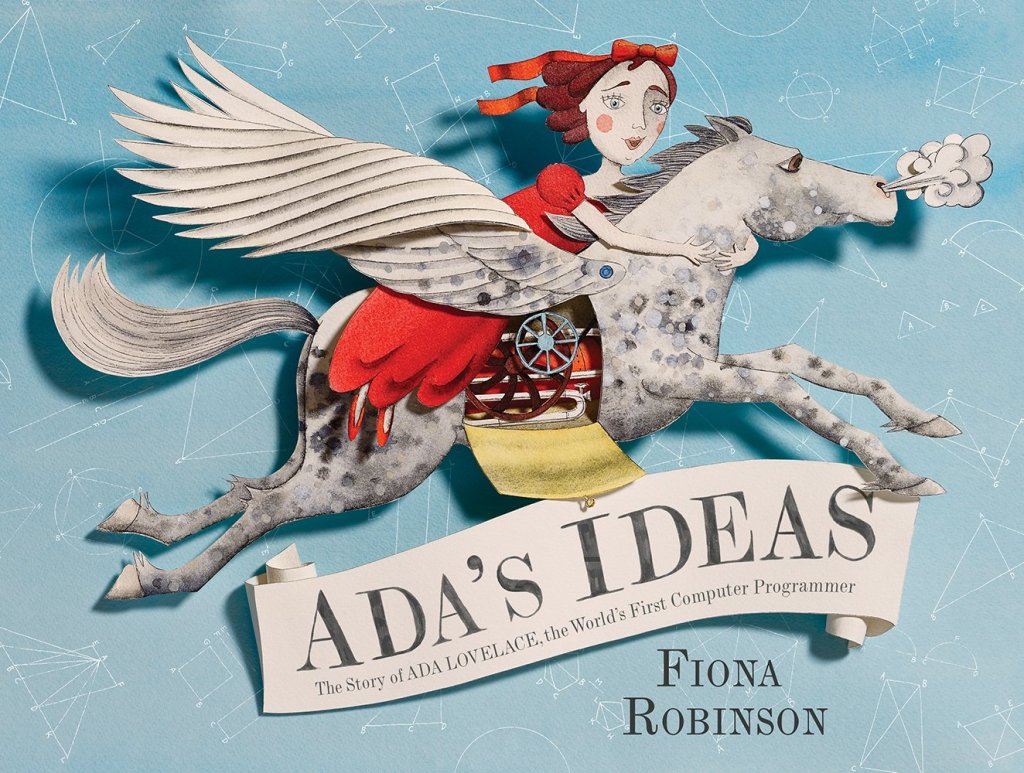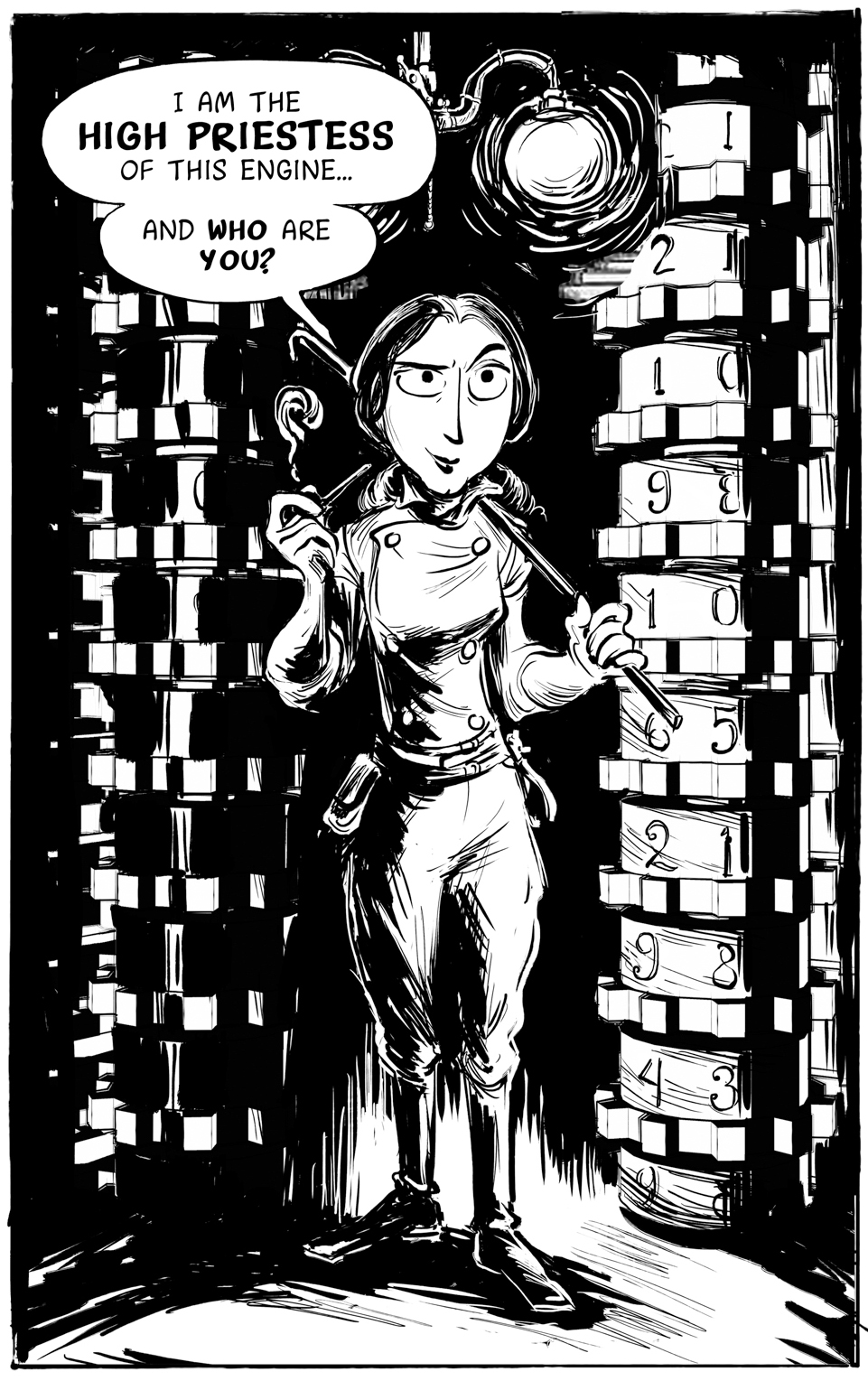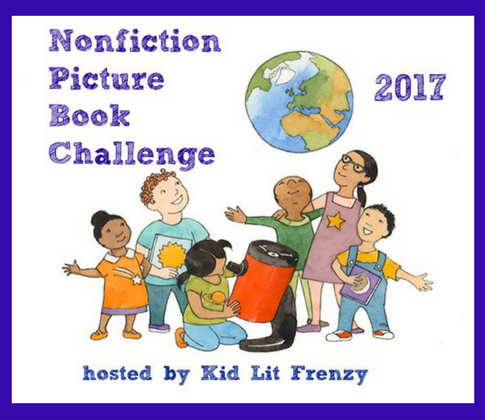Today I am turning over my nonfiction picture book challenge to Carolyn G. Thanks Carolyn for stepping in with a fabulous guest post on Ada Lovelace.
As part of a project for my Literature for Children and Adolescents class earlier this year, I designed a flexible, interdisciplinary picture book–based curriculum focusing on Ada Lovelace. Since today is Ada Lovelace Day, I thought I would share the books I picked out, as well as my corresponding curriculum/activity suggestions. Whether or not you're an educator, I think that these books all offer a fascinating look into the life of one of the most brilliant mathematicians of all time, as well as a valuable, important, and timely lesson about the place for women in STEM.
For those of you unfamiliar with Ada Lovelace, Ada was the daughter of Lord Byron (yes, the famous poet) and Anne Isabelle Milbanke. After her father left her family, her mother implemented a strict, mathematical-based curriculum in Ada's education (in hopes of preventing any creative tendencies from emerging, since her mother feared, as in the case of Ada's father, that creativity would only lead to strife and heartbreak). Using a creative approach to mathematics (and thus synthesizing her parents' talents), Ada became one of the most important mathematicians of all time. Teaming up with the inventor Charles Babbage, the two actually created the blueprints and code for the first computer—in the Victorian era (c. 1837). Tragically, the team could never find enough investors to actually build their 'Thinking Machine,' as they termed it, and Ada died in childbirth when she was only 36 years old. The first computer wouldn't be built until the 1940s (over a century later).
Ada's Ideas: The Story of Ada Lovelace, the World's First Computer Programmer
by Fiona Robinson
Picture book (nonfiction)
Harry N. Abrams (August 2, 2016)
IndieBound | WorldCat
Though I also adore the other biographical picture books about Ada Lovelace listed, Ada's Ideas is my favorite. The book presents enough biographical material to keep the reader informed, while doing a beautiful and creative job visually expressing, well, Ada's ideas and the way she saw the world of mathematics. The art is also gorgeous—all the illustrations are made by watercolored components that were individually cut, arranged, and photographed.
Ada Lovelace, Poet of Science
by Diane Stanley
illustrated by Jessie Hartland
Picture book (nonfiction)
Simon & Schuster/Paula Wiseman Books (February 2, 2016)
IndieBound | WorldCat
Ada Lovelace, Poet of Science presents a straightforward and depiction of Ada Lovelace's life alongside charming illustrations. Something that I appreciated about this book is that it chose to explicitly link Ada's discoveries to our modern technology, which serves to underscore just how critical Ada Lovelace was in the development of technology.
Ada Byron Lovelace and the Thinking Machine
by Laurie Wallmark
illustrated by April Chu
Picture book (nonfiction)
Creston Books (October 13, 2015)
IndieBound | WorldCat
This book is probably the one that reads the most as an upfront biography, though it still entertains as it informs. Ada Byron Lovelace and the Thinking Machine delves more into Ada's relationship with Charles Babbage and their resulting plan for their 'Thinking Machine' (hence the title). Overall, this book provides the most details about Ada's life and her work (whereas the other books tend to include only information relevant to the story, and focus more on the narrative itself).
Ada Twist, Scientist
by Andrea Beaty
illustrated by David Roberts
Picture book (fiction)
Harry N. Abrams (September 6, 2016)
IndieBound | WorldCat
While the other picture books were all nonfiction, Ada Twist, Scientist is fiction loosely inspired by Ada Lovelace (namely, by naming the main character after Ada Lovelace). Continuing the Rosie Revere, Engineer series (whose titular character is inspired by/named after Rosie the Riveter), Ada Twist, Scientist follows a young, curious girl who decides to investigate and empirically derive the source of a mysterious smell in her house—as any young, self-respecting young scientist would do. Showcasing modern examples of little girls who want to be scientists is a great way to take Ada Lovelace's precedent as a woman in science out of the past and continue her legacy. Paired with any of the previously mentioned Ada Lovelace specific picture books, Ada Twist, Scientist is a fun way to show that science is for everyone.
The Case of the Missing Moonstone (Wollstonecraft Detective Agency #1)
by Jordan Stratford
illustrated by Kelly Murphy
Middle grade fiction
Knopf Books for Young Readers (January 6, 2015)
IndieBound | WorldCat
The Case of the Missing Moonstone is a delightful and enchanting work of pure speculative fiction that imagines a (very fictional) friendship between a young Ada Lovelace and a young Mary Wollstonecraft Godwin (who would go on to become Mary Shelley, the author of Frankenstein). While historical accuracy may not be the main point of the novel, it certainly takes these two important literary and scientific figures off the shelf of history and into the realm of relatability. The rest of the Wollstonecraft Detective Agency series seems to be just as wonderful as their predecessor, though I haven't yet had a chance to read them all.
Headstrong: 52 Women Who Changed Science and the World
by Rachel Swaby
Nonfiction
Broadway Books (April 7, 2015)
IndieBound | WorldCat
Anytime anyone asks me about examples of women in STEM, I always throw out the names of Ada Lovelace, Heady Lamarr, Marie Curie—and then I tell them to read this book. Broken up into short chapters, each profiling an important woman in STEM (grouped by their fields of study), this is the perfect resource to discover the (often unrecognized) women who revolutionized math and the sciences. Each chapter in Headstrong is written in an engaging yet informational style, so it's accessible to a wide variety of reading levels and age-ranges.
The Thrilling Adventures of Lovelace and Babbage
by Sidney Padua
Graphic Novel—Fantasy/Speculative HIstorical fiction
Pantheon Graphic Novels (April 21, 2015)
IndieBound | WorldCat
The Thrilling Adventures of Lovelace and Babbage is by far the most wildly fictitious of any of these books. Echoing the mathematical fantasy lands of Lewis Carrol (who based his Wonderland off of new mathematical theories at the time, by the way), this graphic novel imagines that Ada didn't die in childbirth and that the two actually build the first computer...and all of their resulting adventures. The book is chock full of wry, self-aware footnotes, complex mathematical concepts, and hilarious escapades.
Curriculum suggestions:
- Elementary school: have an Ada Lovelace Day or Women in STEM celebration, using the picture books referenced. Or, compare and contrast the three biographical works— —to look at different methods of storytelling.
- Late Elementary School/Middle School (English): using Ada's Ideas as an introduction to background information on Ada Lovelace, have students read The Wollstonecraft Detective Agency to talk about the difference between speculative fiction and historical fiction, and to serve as a launching point to talk about notable literary figures of the time: Mary Shelley, Percy Bysshe Shelley, Lord Byron, etc.
- Late Elementary School/Middle School (Science): using Ada's Ideas to introduce Ada Lovelace, hold a class discussion about the historical role of women in STEM. Require students to choose a female scientist profiled in Headstrong, and have them do a short report/class presentation (a couple of pages and a couple of minutes, respectively). The students could all present on one day, as a Women in STEM celebration day, or the report presentations could be a regular fixture in the class schedule—say, one person presents their report each Friday morning.
- High School (Math): use excerpts from The Thrilling Adventures of Lovelace and Babbage (using a document camera) to teach specific math concepts (say, imaginary numbers), and use the book as a reward for good behavior—read excerpts to the class when they finish their work early, or allow students to individually read the book if they finish their test/assignment early.
Why is this important?
Firstly, this provides a chance to share the stories of women in STEM who have had their achievements forgotten, or, in some cases, even stolen from them—an occurance so common that there's a specific term for it, the Matilda effect. Additionally, in case you aren't aware of the gender gap in STEM, only 24% of STEM jobs are held by women (who make up 48% of the general workforce). One of the best ways to get little girls interested in STEM fields is to show them that women have contributed to the sciences, and that they, too, can be scientists. They can succeed in science, because these women have succeeded already.
Are there any Ada Lovelace books I missed out on, or some other great books about women in STEM? Let me know in the comments, or tweet me @YALiTFrenzy on Twitter.
Carolyn is a teen blogger who shares her favorite YA reads and favorite book related finds with readers on Fridays.
Artword by Sarah S. Brannen ©2017
Don't forget to link up your nonfiction reviews...











